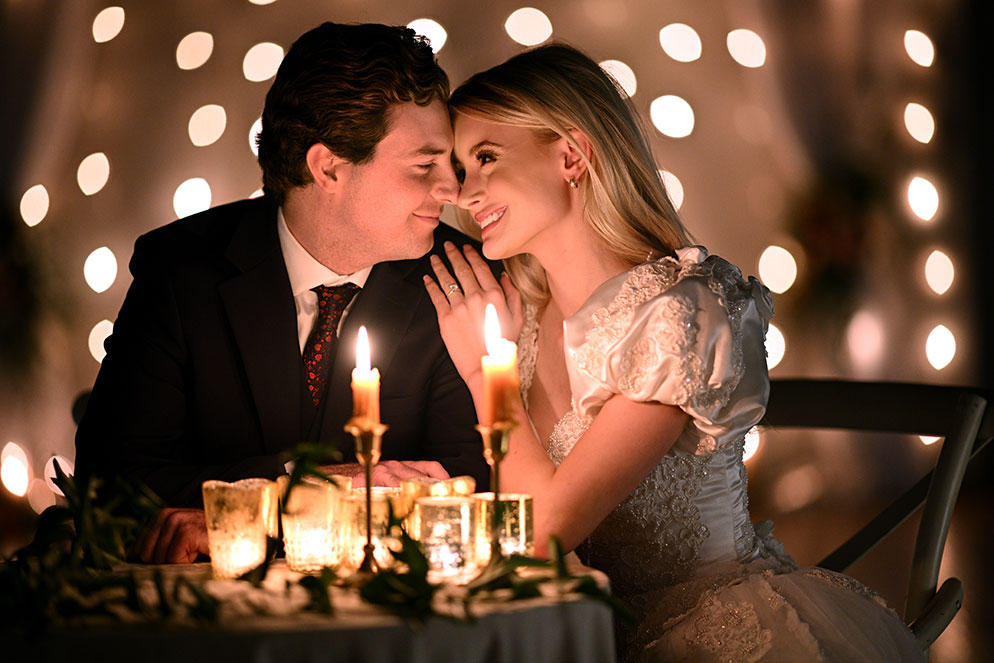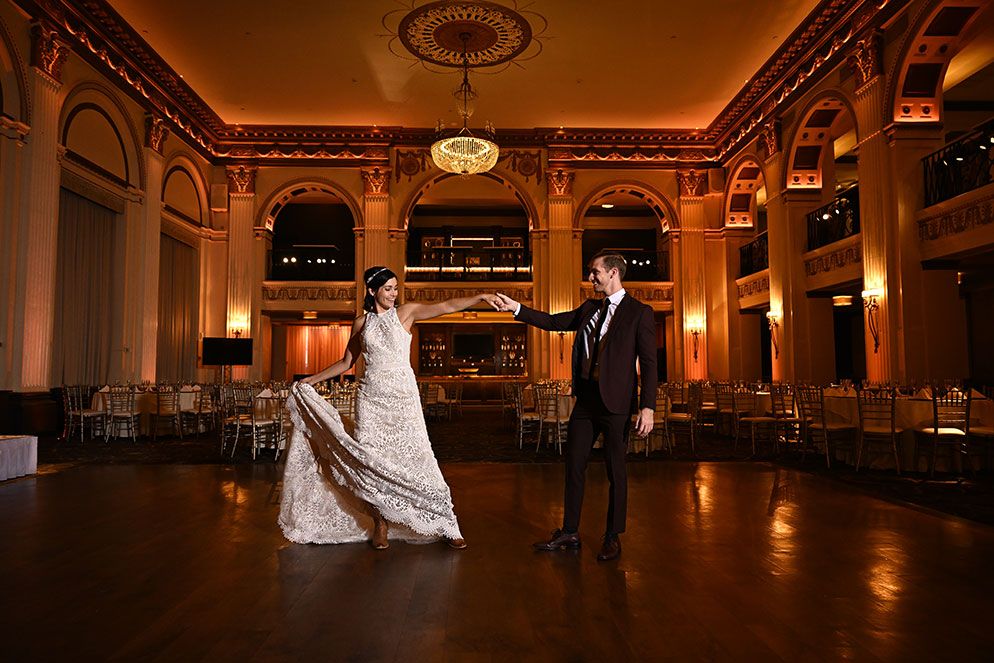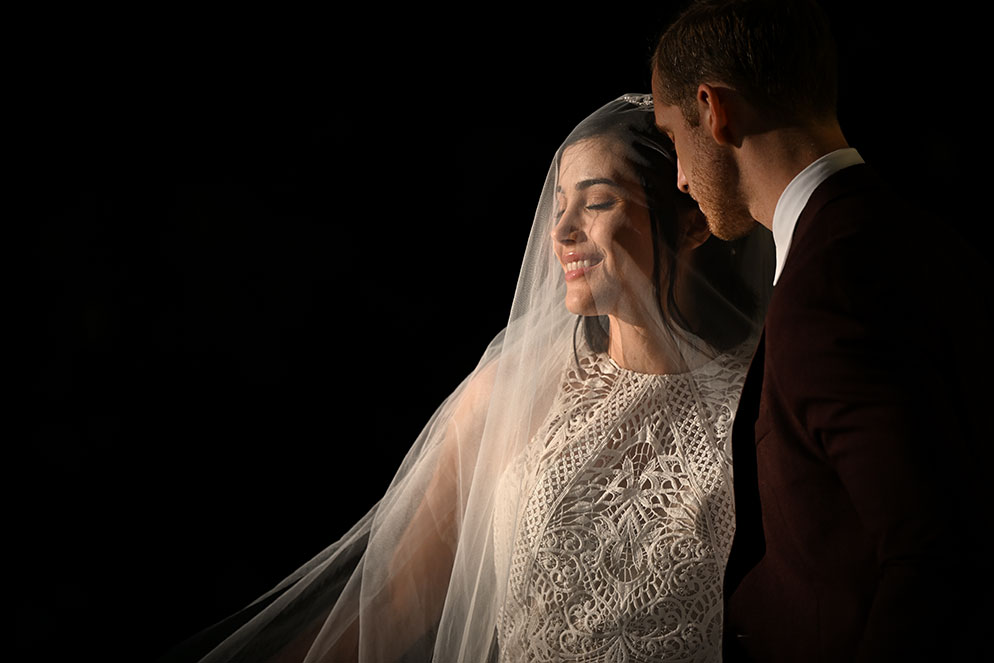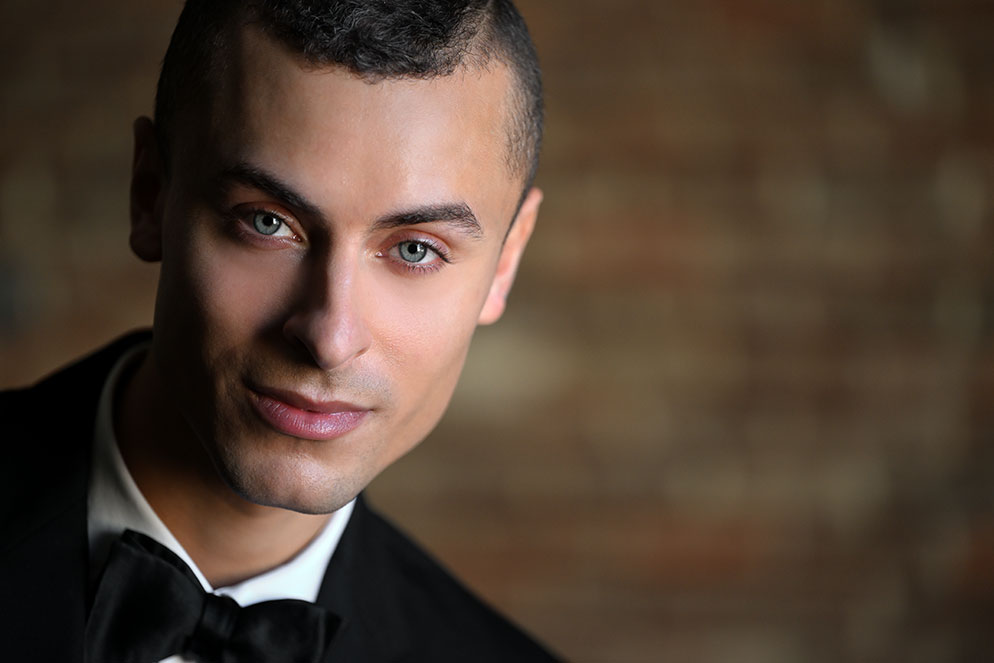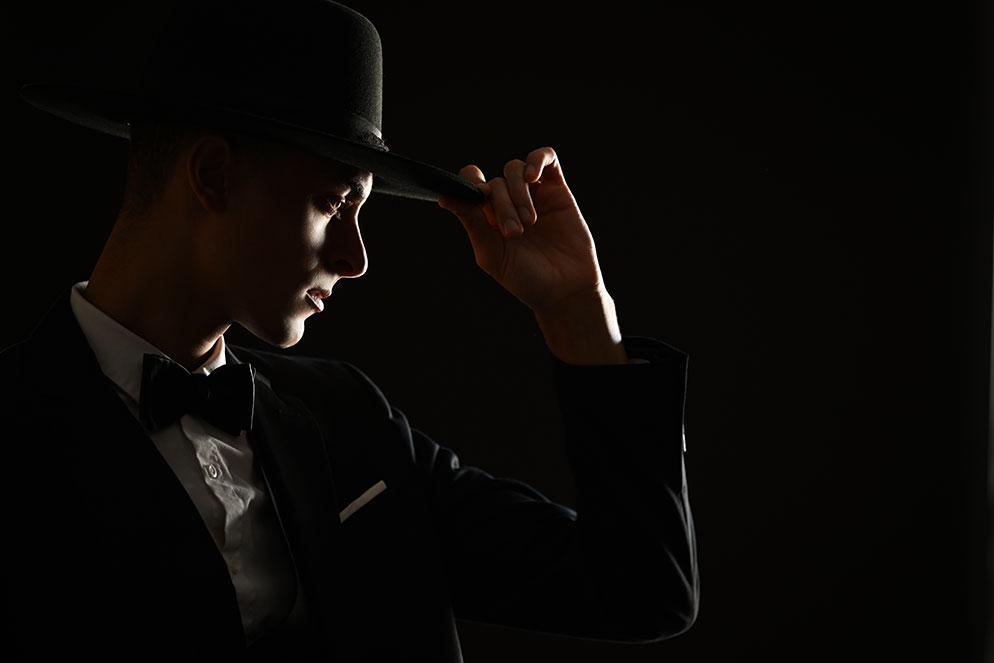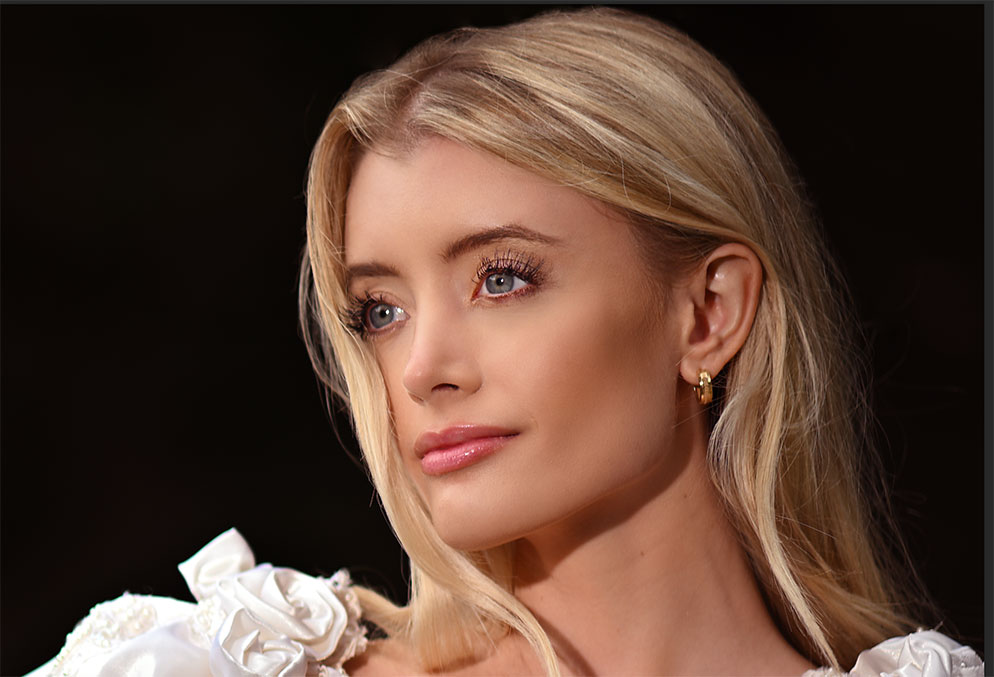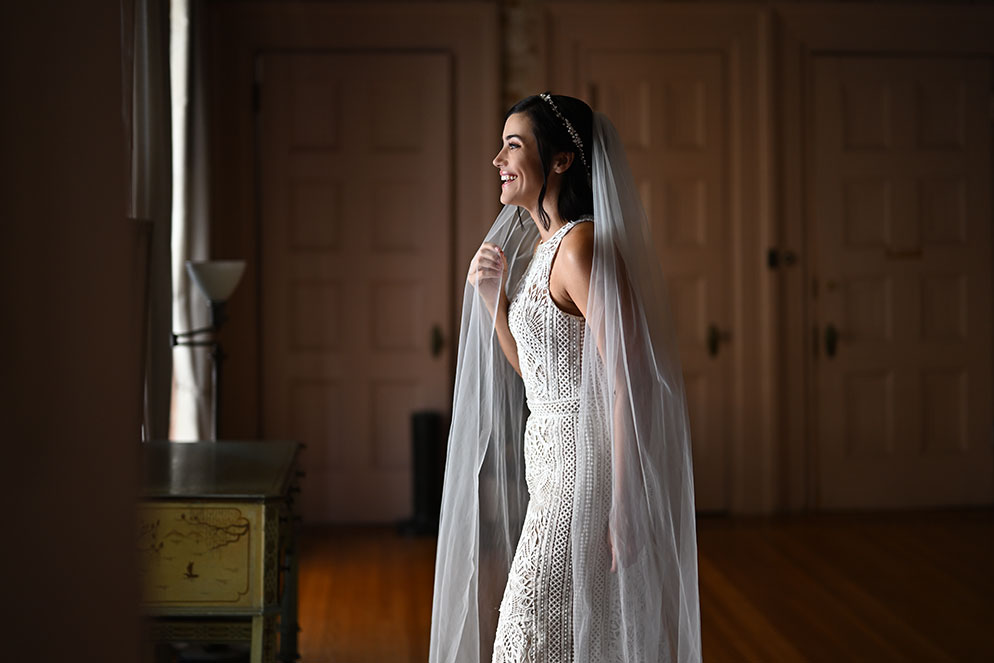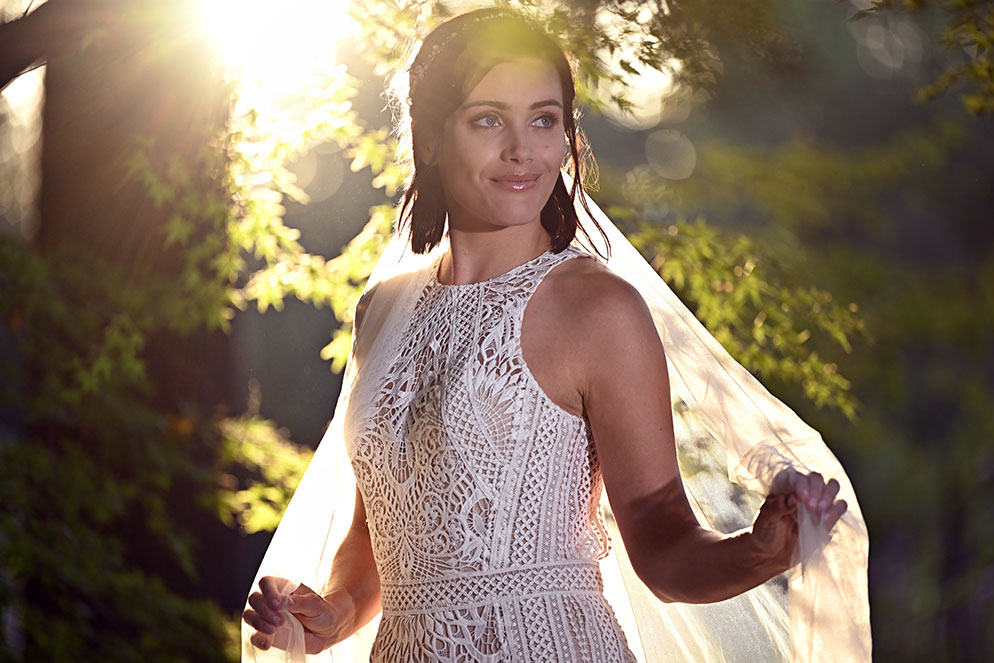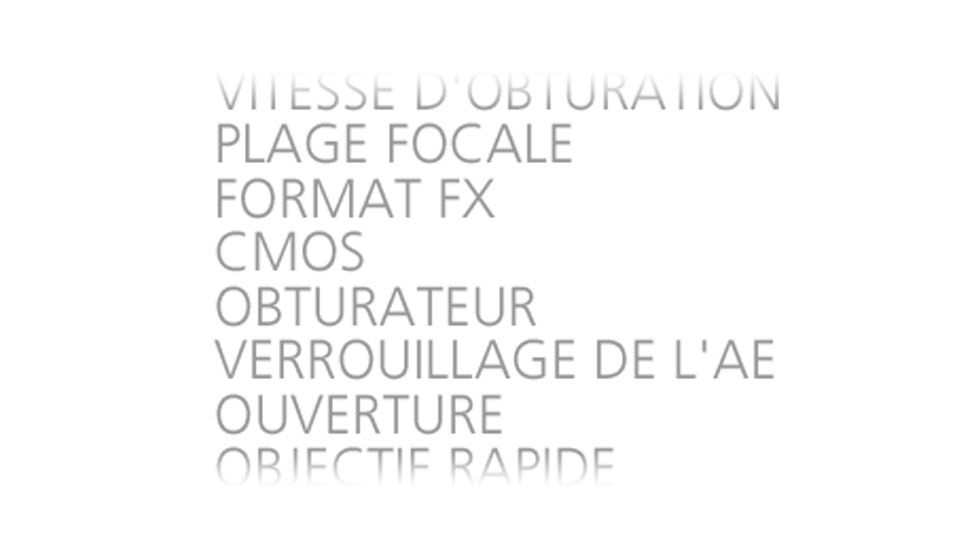So, Is There Anything the Z 9 Can’t Do?
(Truth Is, We’re Running Out of Challenges)
Knowing Cliff Mautner’s pragmatic nature, the first thing we asked him about his photography with the Z 9 was, “So, specifically—what will the camera do for you?” Without hesitation, he said, “There isn’t much it can’t do for me.”
Then, knowing the essence of his wedding photography style and the look of many of his images, we narrowed things down a bit by asking about the accuracy and persistence of Eye AF and 3D focus tracking in situations that present his subjects in dramatic, compelling and often tricky lighting.
Cliff, you see, has a thing about light and dark…or more correctly, dark, and then light.
Got a minute for the story?
Sunday in the Park with Cliff
A square in Center City, Philadelphia, 2003, maybe 2004, Cliff’s not certain. He was shooting film, so it’s likely the camera was his F5, and the film would have been Tri-X or XP2. “The bride is leaning against a wrought-iron fence, against a dark background,” he says. “Sun’s coming right at me, but she’s facing away, so the sun’s going through her veil—it’s beautiful, and I make a few frames, not knowing how, or even if anything will turn out. When I see the photos, I’m like, Wow, this is really cool!”
“They’re in sunshine, outdoors, and what I like is to put people in patches of light to play around with—either shoot with it or against it, into it or between it. I set 1/8000 second because there was so much light on them, and I shot wide open to soften the background. This is Eye AF, even though her eyes are closed and through a veil.” Z 9, NIKKOR Z 70-200mm f/2.8 VR S, 1/8000 second, f/2.8, ISO 320, manual exposure, Matrix metering.
He knows right away he’s onto something. “I start to play around with highlights and shadows, juxtaposing the two, one against the other in different situations.” What he was doing, and didn’t realize at the time, was his version of painting with light. “I’ve said this before, and it’s absolutely true to the way I work: shadow is my canvas, light is my paint,” Cliff says. And then, borrowing from a fellow Nikon Ambassador, he adds, “Dave Black says, ‘You want to make a photograph more interesting, light only part of it.’”
Because he can’t bring darkness to a scene, Cliff’s blank canvas is shadow, to which he brings light by choosing a light-offering location or using an off-camera light source. “In either case I can control where the light is falling, how it’s falling and how much is falling. Most important is the direction of the light that’s illuminating my subject. Direction creates dimension.”
Enter the Z 9
The Z 9’s role in Cliff’s light management comes into play by bringing accuracy, versatility, confidence and control to wedding photography situations and the dramatic, often challenging shadow-and-light connections Cliff likes to make.
It does that for him because the Z 9 offers enhanced Eye AF and, for the first time in a Z camera, 3D focus tracking, and that’s a powerful combination for his style of shooting, one that will cover almost every aspect of a wedding day.
“Eye AF locked on—just check how sharp it is at one hundred percent,” Cliff says. “It’s crazy.” Z 9, AF-S NIKKOR 105mm f/1.4E ED, Mount Adapter FTZ II, 1/320 second, f/1.4, ISO 64, manual exposure, Matrix metering.
When Cliff said to check the photo at 100 percent, we did, and what we saw was exactly what we expected: performance that instills confidence.
The examples come quickly: “If it’s a portrait setting or a situation where people are fairly static, it's going to be Eye AF—the Z 9 is going to be spectacular for that, especially in low light,” he says. “For a processional or recessional, when people are coming right at me, or a first dance, or other times when there’s movement and action—especially instances of unpredictable movement—3D tracking, which I had in my DSLRs, is going to be my go-to mode. Once I choose where the AF point will start, it then stays with that person, no matter if there are people in the foreground or background. So if the bride and groom are working the room together, I can lock onto one of their faces and the camera will stay with that person.”
This will be important to another aspect of his style: capturing images in three dimensions—foreground, subject, background. “Too often photographers don’t give enough credence or thought to seeing three dimensionally, or using background to their advantage,” he says. “Because I do, and because of the capabilities of this camera—its resolution is astounding and the speed of its autofocus is the best I’ve ever seen—I’m going to yield a greater number of keepers.”
“Another Eye AF shot—a spontaneous moment, all window light,” Cliff says. “I had total confidence that wherever she moved, whatever her expression, her animation, I was going to get it, perfectly exposed and tack-sharp. The idea was to eliminate the background textures so your concentration is on the story, not the setting. Wide open, Eye AF, done.” Z 9, NIKKOR Z 50mm f/1.2 S, 1/320 second, f/1.2, ISO 500, manual exposure, Matrix metering.
[The Z 9’s] resolution is astounding and the speed of its autofocus is the best I’ve ever seen….
“It doesn’t get much more extreme than dealing with flare and late-day sun coming directly into the lens to provide a bit of deliberate flare. I also used off-camera continuous light to give her face a little more definition. Eye AF had no trouble—this was not a challenge for the camera.” Z 9, NIKKOR Z 70-200mm f/2.8 VR S, 1/400 second, f/2.8, ISO 640, manual exposure, Matrix metering.
Imagine it, Capture It
After the talk of the Z 9’s technical specifics and what they mean to Cliff’s photography, he gets to what lies just beyond pragmatism. “What it boils down to is vision,” he says. “The Z 9 enables me to think less about the photograph and about producing the photograph. It allows me to concentrate on my vision for the image itself. You still need the skills—the craft hasn’t changed because the camera has. The artistic vision may be easier to implement, but you still have to understand the nature of how everything works together—the subject, the lens used, the light, your composition and settings. But this camera frees me up—there’s a liberating aspect. I’m free to feel the image.”
And there we had it: a pragmatist’s take on technical ability fostering artistic confidence. Sounds like Cliff’s onto something.
Z 9 BTS with Cliff Mautner - Cliff’s shoot with the remarkable Z 9 checks all the boxes, including a most important one: confidence.



